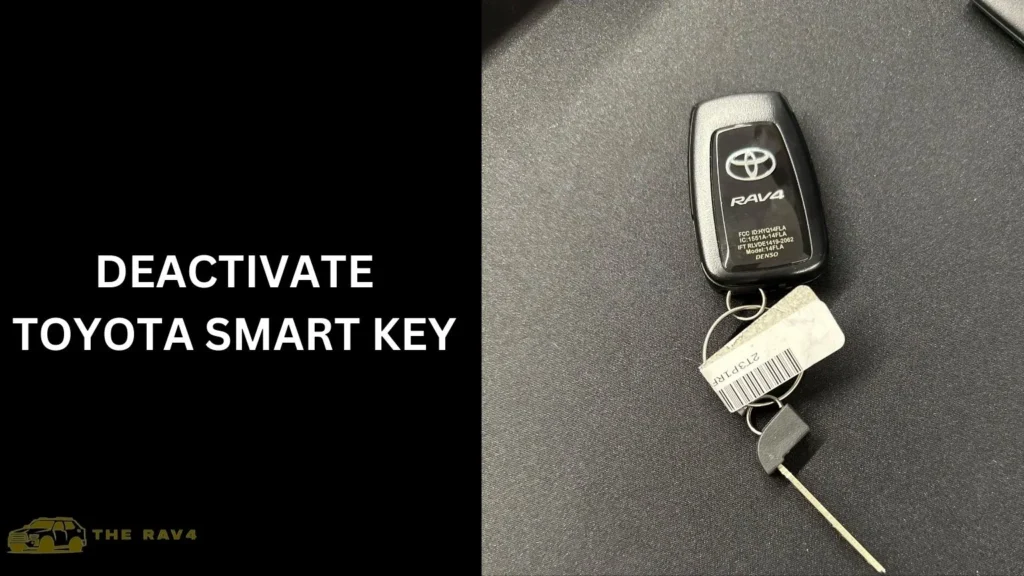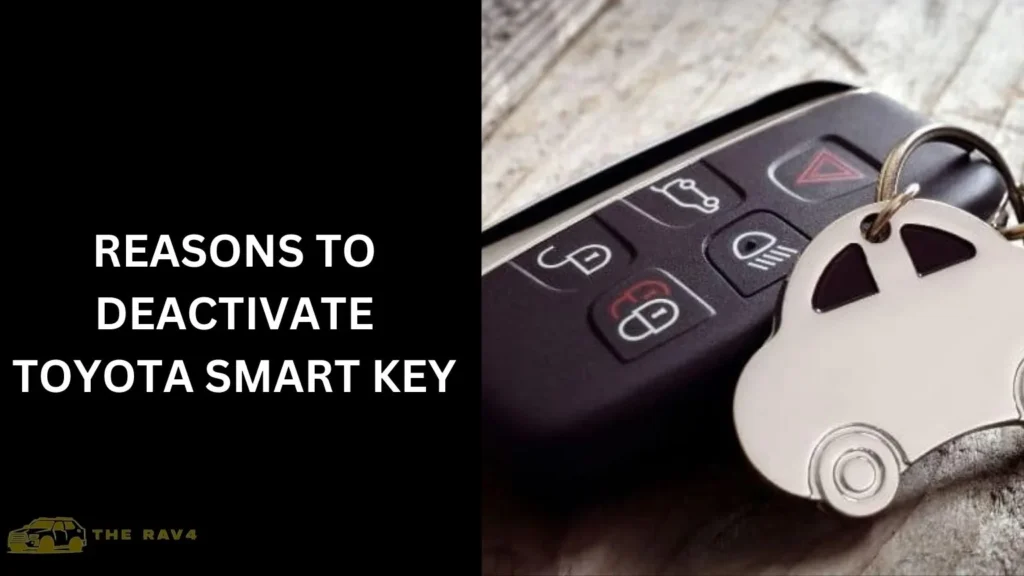In today’s automotive landscape, convenience and security go hand in hand. Deactivate Toyota Smart Key,
The advent of smart key technology has revolutionized how we interact with our vehicles, offering seamless entry and ignition experiences.
However, there are times when you might need to deactivate your Toyota smart key system, whether for security reasons, battery concerns, or personal preference.

Introduction to Toyota Smart Key
Toyota Smart Key is a sophisticated system designed to provide a seamless and secure driving experience.
It allows drivers to unlock doors, start the engine, and operate various vehicle functions without physically using a key.
The smart key communicates with the vehicle via radio frequency signals, enhancing convenience and eliminating the need for traditional keys.
What Does Deactivating Toyota Smart Key Mean?
Deactivating the Toyota Smart Key involves disabling the system temporarily or permanently, depending on the user’s needs.
This process prevents the smart key from communicating with the vehicle, effectively reverting to manual key usage for entry and ignition.
Reasons to Deactivate Toyota Smart Key

Deactivating a Toyota Smart Key system can be a decision based on several factors, each addressing specific concerns or preferences of the vehicle owner.
Below are some common reasons why someone might choose to deactivate their Toyota Smart Key:
Security Concerns
Some users may choose to deactivate their Toyota Smart Key to mitigate security risks. By disabling the system, unauthorized access to the vehicle via relay attacks or signal interception can be prevented.
Battery Drain Issues
Another common reason for deactivation is to address battery drain concerns. While smart keys are efficient, prolonged use or faulty components can lead to excessive battery consumption. Deactivating the system can help conserve battery life.
Personal Preference
Additionally, some drivers prefer the tactile feedback of using a physical key over the wireless functionality of a smart key.
Deactivating the smart key system allows them to maintain a more traditional driving experience.
Steps to Deactivate Smart Key of Toyota
Deactivating your Toyota Smart Key is a straightforward process that can be done manually. Here are the general steps:
- Locate the Smart Key Deactivation Switch: Depending on your Toyota model, the deactivation switch may be located near the steering column or in the glove compartment.
- Turn Off the Smart Key System: Use the designated switch to disable the smart key functionality. This action prevents the smart key from sending signals to the vehicle.
- Confirm Deactivation: Once the system is deactivated, test the manual key entry and ignition to ensure proper functionality.
Benefits of Deactivating the Smart Key
Deactivating your Toyota Smart Key offers several advantages:
- Enhanced Security: Prevents unauthorized access and potential theft of your vehicle.
- Peace of Mind: Knowing that your vehicle is secure, especially during periods of disuse or when the Smart Key is compromised.
- Maintenance Support: Facilitates servicing and repairs of the Smart Key system without affecting vehicle operation.
Safety Concerns and Considerations
While deactivating the Smart Key can enhance security, it’s essential to consider safety aspects:
- Manual Entry: Be prepared to use the traditional key entry method if the Smart Key is deactivated.
- Emergency Access: Ensure that you have access to alternative entry methods in case of emergencies.
Effects of Deactivating Toyota Smart Key
Deactivating a Toyota Smart Key system can have several effects, ranging from enhanced security to changes in vehicle operation.
Below are the key effects of deactivating a Toyota Smart Key:
Enhanced Security
By deactivating the smart key system, you reduce the risk of unauthorized access and potential vehicle theft. This added layer of security can offer peace of mind, especially in high-theft areas.
Reduced Battery Usage
Disabling the smart key system helps conserve battery power, extending the lifespan of your smart key’s batteries. This is particularly beneficial for users who experience frequent battery drain issues.
Manual Key Usage
Deactivating the smart key prompts users to rely on manual key entry and ignition.
While it may require a slight adjustment in habits, some drivers appreciate the tactile feel and simplicity of using a physical key.
People also ask
Can you disable Toyota Smart Key?
Yes, you can disable the Toyota Smart Key by following specific steps outlined in your vehicle’s manual or consult with a certified technician.
Where is Toyota Smart Key deactivation switch location?
The location of the Toyota Smart Key deactivation switch varies depending on the model and year of the vehicle.
It is typically located near the steering column or inside the glove compartment.
Refer to your vehicle’s manual for specific instructions on locating the deactivation switch.
Can I disable keyless entry?
Yes, you can disable keyless entry on some vehicles by accessing the settings in the vehicle’s control system.
However, this capability may vary depending on the make and model of your car.
It’s advisable to consult your vehicle’s manual or contact a certified technician for guidance on how to disable keyless entry safely and effectively.
How do you turn off a key fob?
To turn off a key fob, you can usually do so by pressing and holding the lock and unlock buttons simultaneously for a few seconds.
This action may vary slightly depending on the make and model of the key fob.
Refer to your vehicle’s manual for specific instructions on how to turn off your key fob properly.
Conclusion
In Conclusion, Deactivating your Toyota Smart Key can be a practical solution for addressing security, battery, or personal preference issues.
By understanding the process and potential effects, you can make an informed decision that suits your driving needs. Remember to follow manufacturer guidelines and seek professional assistance if required.